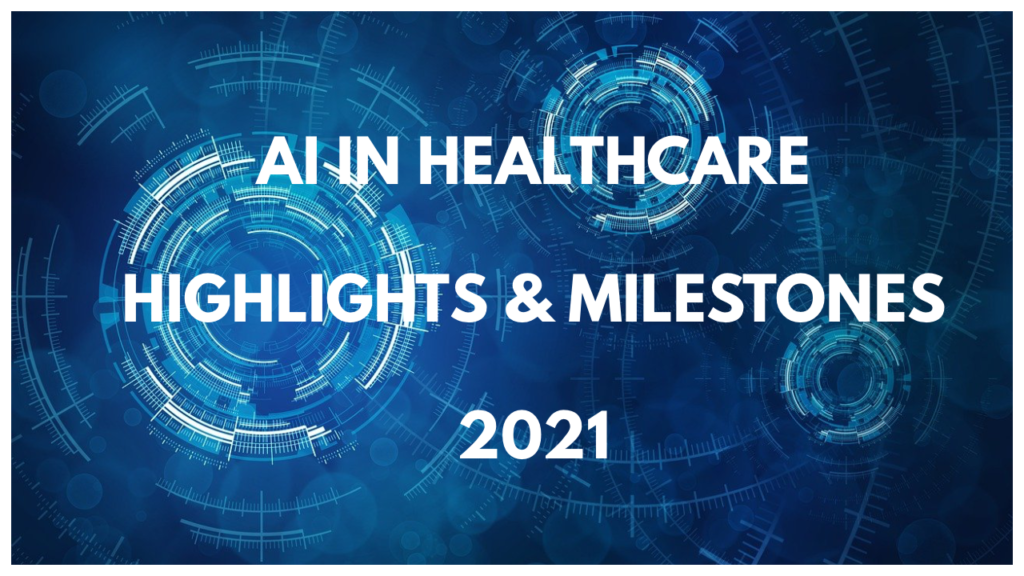
AI in Healthcare companies are making significant progress. We’ve reached the threshold of a new era where advanced technologies will improve the way we understand, treat, and prevent disease.
In 2021 the application of AI enabled advances in many areas of healthcare. We made significant progress in AI for drug discovery, medical imaging, diagnostics, pathology, and clinical trials. Important peer reviewed papers were published and dozens of partnerships were formed. Big Pharma companies and major tech companies became very active in the space. Record amounts of funding were raised, and a few companies even started human clinical trials. Microsoft and NVIDIA launched two of the world’s most powerful supercomputers and Microsoft announced Azure OpenAI Service. In 2022 I expect several technologies to converge across the healthcare spectrum.
This is the first in a series of progress reports I’m writing on the sector that will be supplemented by industry performance data and metrics compiled in partnership with The Alliance for Artificial Intelligence in Healthcare (AAIH). I expect several technologies to converge across the healthcare spectrum this year.
AI Predicts Which Women Will Develop Breast Cancer and Those Who Will Not
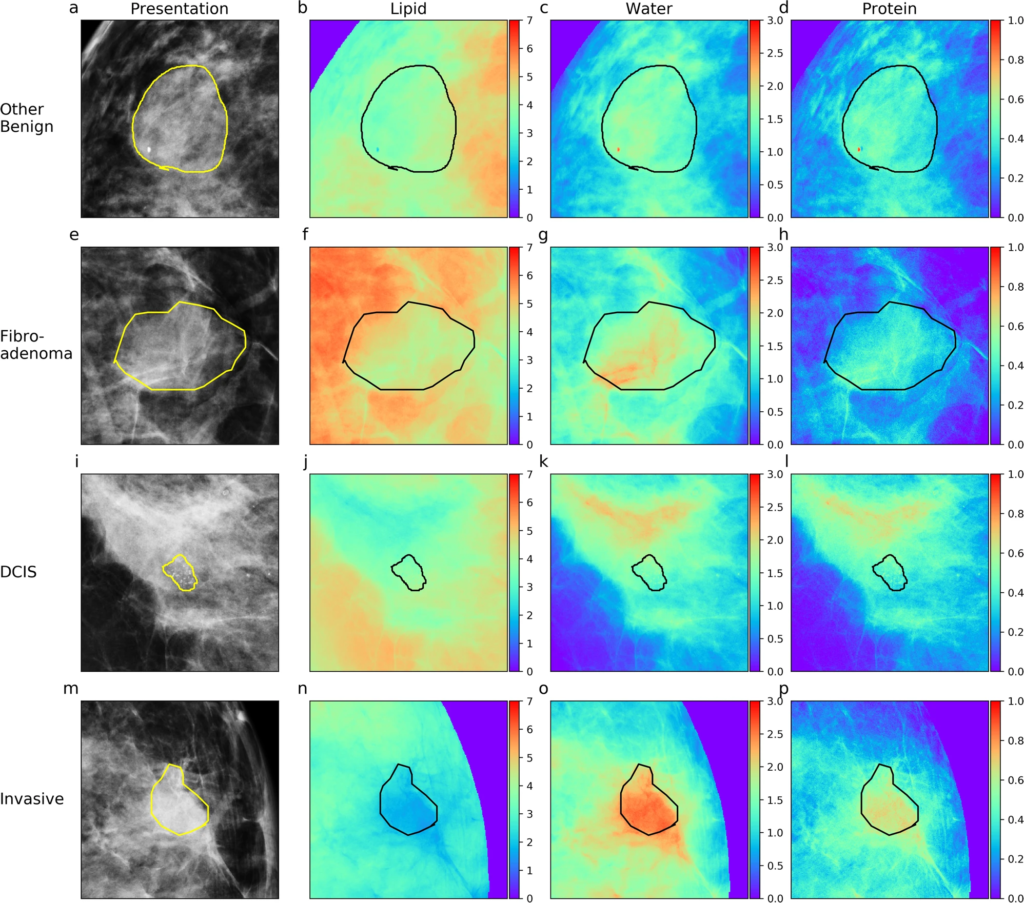
In September, AI researchers at the AI Precision Health Institute at the University of Hawaiʻi Cancer Center published two high profile papers demonstrating for the first time that deep learning can distinguish between mammograms of women who will develop breast cancer and those who will not. In one paper the researchers confirmed that invasive breast lesions have unique compositional signatures and demonstrated that compositional profiles of the breast combined with CAD predictions can improve the detection of malignant breast cancer. In the other paper researchers showed that deep learning models performed better than models using clinical risk factors in determining screening-detected cancer risk. There are multiple AI algorithms approved by the FDA for detecting breast cancer. The best of these algorithms have a sensitivity of 82% in the detection of breast cancer, with a fixed specificity of 96.6%. Using this deep learning algorithm with a radiologist improved the sensitivity by 8%. Note: I’m on the advisory board at the AI Precision Health Institute. I follow their work closely and I frequently write about their research.
AI Identifies Live Cancer Cells In Less Than 35 Minutes With 95% Accuracy

Researchers at National University of Singapore developed a novel protocol using AI and inexpensive equipment to identify live cancer cells in less than 35 minutes with 95% accuracy. Yuri Belotti, PhD, Doorgesh Sharma Jokhun, PhD, and Professor Chwee Teck (C.T.) Lim developed a novel protocol for single-cell classification based on intracellular pH. Since cancer cells have different intracellular acidity than normal cells, the AI algorithm identified cancer cells by examining the level of acidity. They used a pH-sensitive dye that changes color according to the level of acidity. Using AI they were able to quantitatively map the unique acidic fingerprints so that the cell types examined can be easily and accurately identified. They were able to discriminate between normal and cancer cells, discriminate between benign and metastatic cells, and classify cancer cells that originated from different organs. Current techniques like fluorescent probes induce toxic effects and can kill the cells, whereas the new technique does not kill cells. This novel method opens up the potential to perform rapid noninvasive identification of living cancer cells for early cancer diagnosis and further downstream analyses. The paper was published in APL Bioengineering.
AI Algorithm Helps Hospitals Reduce Missed Fractures By 29%
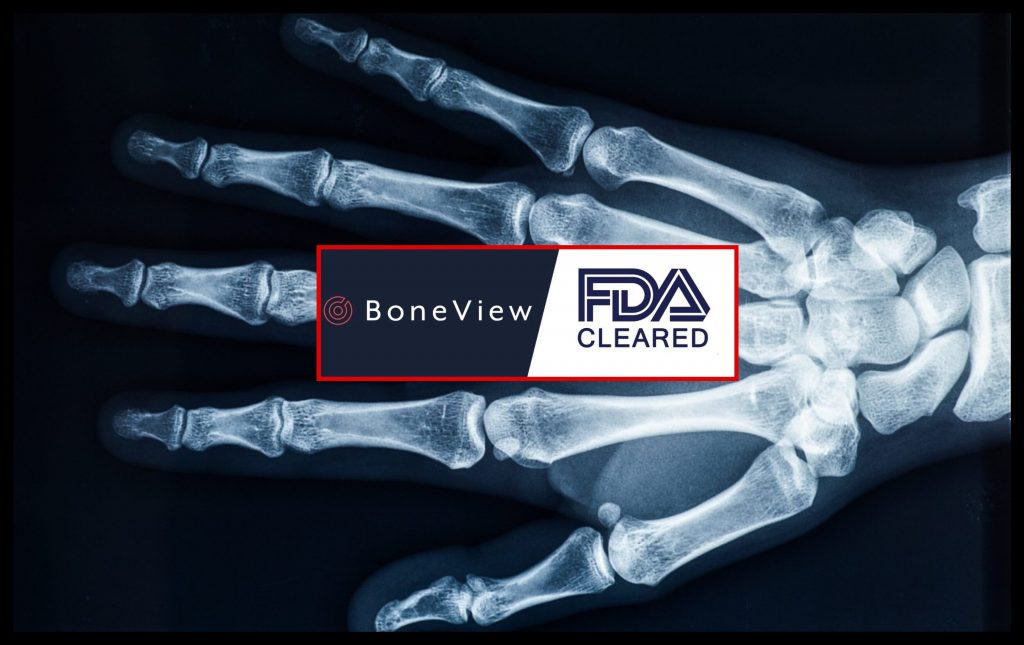
In December, Gleamer AI demonstrated that their algorithm can quickly detect and flag X-rays with positive fractures helping hospitals reduce missed fractures by 29%. Due to the large number of X-rays that have to be read by radiologists, patients often have to wait hours in the ER before they can be seen, evaluated, and receive treatment. Fracture interpretation errors represent 24% of harmful diagnostic errors in the ER. Inconsistencies in diagnosis of fractures are most common between 5pm and 3am due in part to fatigue. In this retrospective diagnostic study, a dataset of 480 X-rays was read by 24 readers who assessed the X-rays with and without AI. To simulate real life scenario the study included readers from many disciplines including radiologists, orthopedic surgeons, emergency physicians, physician assistants, rheumatologists, and family physicians, all of whom read X-rays real clinical practice to diagnose fractures in their patients. Each reader’s diagnostic accuracy of fractures, with and without AI assistance, were compared against the gold standard. They also assessed the diagnostic performance of AI alone against the gold standard. The AI model was trained on a large x-ray data set from multiple hospitals to identify limb, pelvis, torso, lumbar spine, and rib cage fractures. The AI increased sensitivity by 16% for exams with 1 fracture and by 30% for exams with more than 1 fracture. The AI algorithm can quickly detect and flag X-rays with positive fractures so that radiologists can prioritize reading them.
FDA Approves First Ever AI-Based Pathology Product
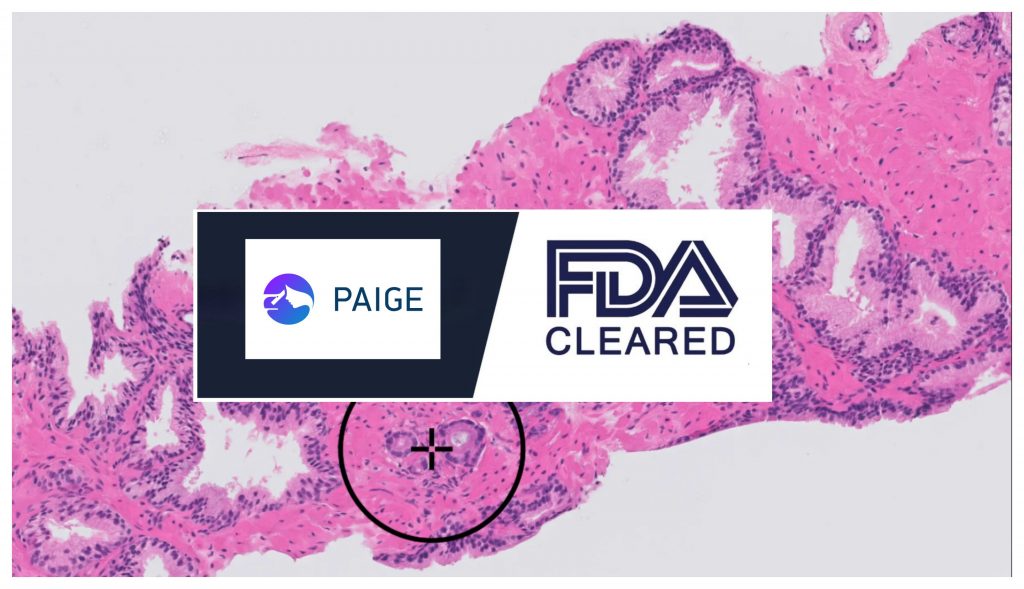
In September, in a historic milestone, the FDA approved the first ever AI-based pathology product approved for clinical use. Paige Prostate is the first and only AI-based pathology product to receive FDA approval for in vitro diagnostic use in detecting cancer in prostate biopsies. FDA approval allows pathology laboratories to use Paige Prostate to help make diagnosis more accurate, more reproducible, and more efficient. The number of cancer cases worldwide is projected to increase by 60% over the next two decades. Since there will be a decrease in the number of pathologists relative to demand, there is a significant need for new technologies for use in pathology. After non-melanoma skin cancer, prostate cancer is the most common cancer among men in the US and one of the leading causes of cancer death in men. Paige Prostate is a clinical-grade AI solution designed to identify foci that could indicate cancer, enabling fast, accurate in vitro diagnosis. Pathologists using the technology have been shown to significantly increase their capabilities to accurately and effectively find prostate cancer. This landmark approval of Paige Prostate by the FDA marks the beginning of a new era in the use of AI in pathology and paves the way for new innovations using AI in diagnostics.
Insilico Medicine Doses First Human With AI-Discovered Drug
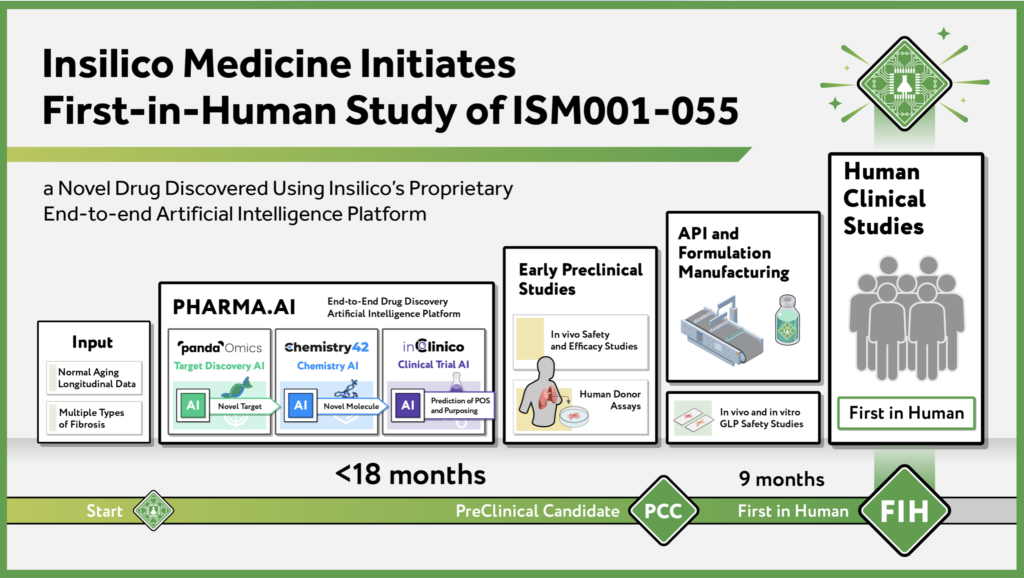
In November, Insilico Medicine announced that they have started the first human trial of ISM001-055 their AI-designed drug candidate for pulmonary fibrosis. This is one of the most significant milestones in the history of AI-powered drug discovery because this is the first time that a human being has been dosed with an AI-discovered novel molecule based on an AI-discovered novel target. A healthy volunteer in an Australian study received a first-in-human intravenous dose of the small-molecule inhibitor aimed at the chronic lung disease. Insilico leveraged Pharma.AI, their AI-powered drug discovery platform, to analyze over 20 disease targets to predict the most successful candidate. The company completed the entire discovery process from target discovery to preclinical candidate nomination within 18 months on a budget of $2.6 million. This is the first AI discovered compound to enter the clinic and more compounds are expected in the near future.
Healx Receives FDA Approval for Fragile X Clinical Trial
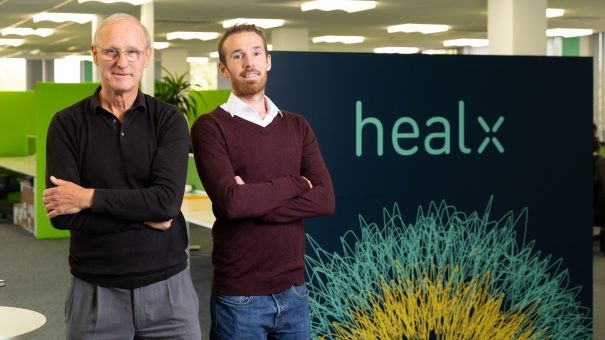
In November, Healx received FDA approval for a phase 2a clinical trial of an AI-discovered compound that could help manage the symptoms of the genetic disorder Fragile X syndrome. The clinical study will attempt to find at least one novel and effective combination therapy for Fragile X syndrome – the world’s leading inherited cause of autism and learning difficulties which affects roughly 1 in 4,000 males and 1 in 8,000 females around the world. Healx is one of very few AI companies that has started clinical trials. This is an exciting milestone for everyone in the AI for Drug Discovery space.
Owkin Becomes A Unicorn With $180 Million Investment From Sanofi
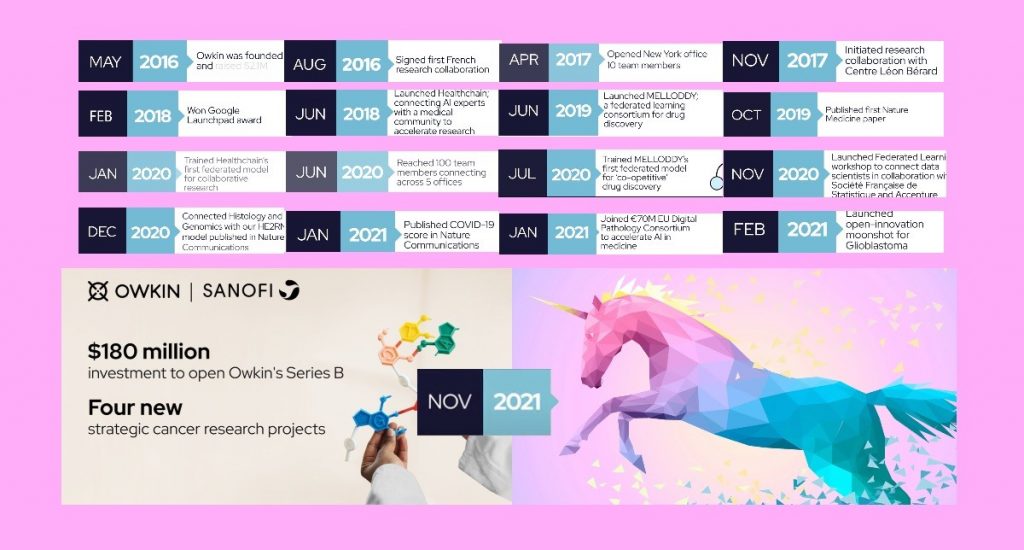
In November, Owkin and Sanofi announced that Owkin is now a unicorn – a startup valued at more than $1 billion – through a new $180 million investment from Sanofi. Prior to Sanofi’s investment, Owkin raised over $70 million from leading investors including GV, Alphabet, Bpifrance, and Eight Roads. Owkin and Sanofi will enter a strategic multi-year collaboration to seek out new cancer therapies using AI. The project will focus on four types of cancer including non-small cell lung cancer, triple-negative breast cancer, mesothelioma, and multiple myeloma using Owkin’s predictive biomedical AI models to find new biomarkers and therapeutic targets. The company was built on the belief that medical research should be collaborative, inclusive, and privacy-preserving. Today, Owkin is building a global research network — using federated learning — connecting data scientists, clinicians, researchers, and pharma on a research platform that keeps the data secure and preserves privacy. Owkin’s work has been published in Nature Medicine and other top-tier journals.
Roche and Genentech Commit up to $12 Billion to Recursion
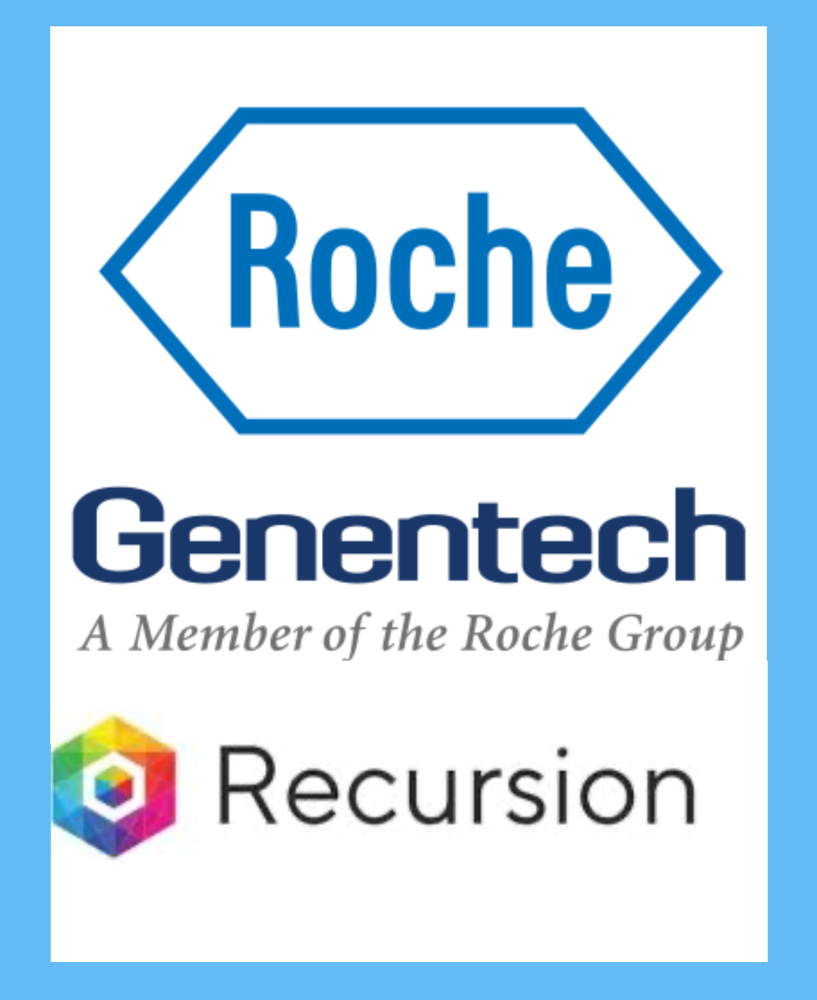
In December, Roche and Genentech committed up to $12 billion to Recursion to use their OS in a major AI Drug Discovery collaboration. The aim of the collaboration is to advance therapies in 40 programs that include key areas of neuroscience and oncology. They plan to develop new machine learning algorithms to generate highly granular Phenomaps of human cellular biology. The phenomics data (generated in Recursion’s automated labs) will be analyzed by Recursion’s neural networks to turn the data into mathematical representations of biology that can be leveraged to identify novel biological relationships and initiate therapeutic programs. Recursion’s automated platform (which merges computer-driven dry lab approaches with traditional wet labs) will examine chemical and genetic changes in cell types related to the brain and nervous system and to tumor cell lines.The companies plan to leverage insights generated from their maps of human cellular biology to rapidly find and develop medicines against novel targets in neuroscience and oncology for 10 years or longer.
Google Parent Company Alphabet Launches Isomorphic Labs
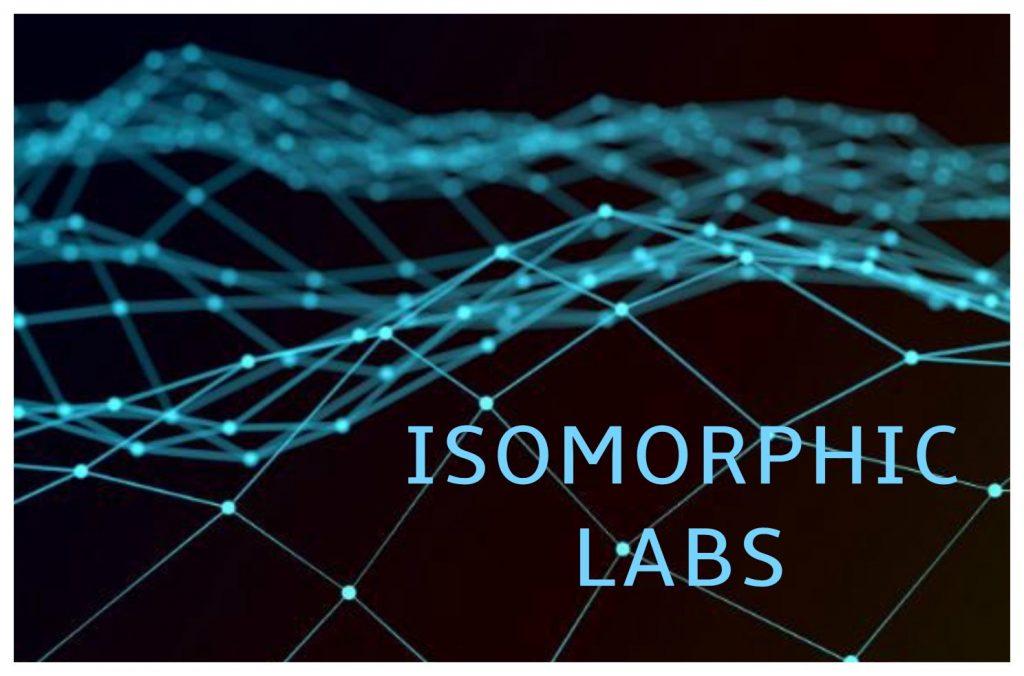
In November, Google parent company Alphabet launched Isomorphic Labs. Isomorphic is dedicated to AI for drug discovery and plans to reimagine the entire drug discovery process from the ground up with an AI-first approach. The company will try to build models that can predict how drugs will interact with the body. The company may not develop its own drugs but instead sell its models. The company plans to partner with biomedical and pharma companies using AI to discover new medicines. DeepMind CEO Demis Hassabis will also serve as the CEO for Isomorphic, but the two companies will stay separate and collaborate occasionally. Hassabis chose Isomorphic as the company name because he believes that there may be an underlying structure between biology and information science. In science, isomorphic refers to things that share a common form or relationship. Isomorphic is building a world-class multidisciplinary team, with deep expertise in AI, biology, medicinal chemistry, biophysics, and engineering.
Neuroscientists Use AI Algorithms To Analyze Enormous Datasets

In September, Leucadia Therapeutics published and important paper on a new treatment that could potentially prevent Alzheimer’s. The paper decribed how Leucadia developed AI algorithms to analyze enormous datasets to help predict risk of Alzheimer’s disease. The new approach incorporates cutting-edge deep learning applied to an advanced method for ultra-resolution contrast-enhanced micro-CT, a novel animal model, and a large clinical study designed to produce highly curated data for machine learning. 3D U-Net segmentation is an architecture based on the Convolutional Neural Network, which is typically used to classify labels. However, in medical imaging 3D U-Net can do more than just classify. It contains localization to predict the class label of each pixel by providing a local region around that pixel as an input. Dr. Ethell and his team used 3D-UNet to train models with extremely high-resolution samples from post-mortem micro-CT samples. He then used those models to predict bone patterns from low-dose clinical CT scans that have lower resolution. The AI algorithms developed by Leucadia identify edges, boundaries, and holes to reveal where apertures occur and how large they are using a low-dose cone-beam CT scan.
AI Outperforms Traditional Methods Predicting Heart Attack and Stroke
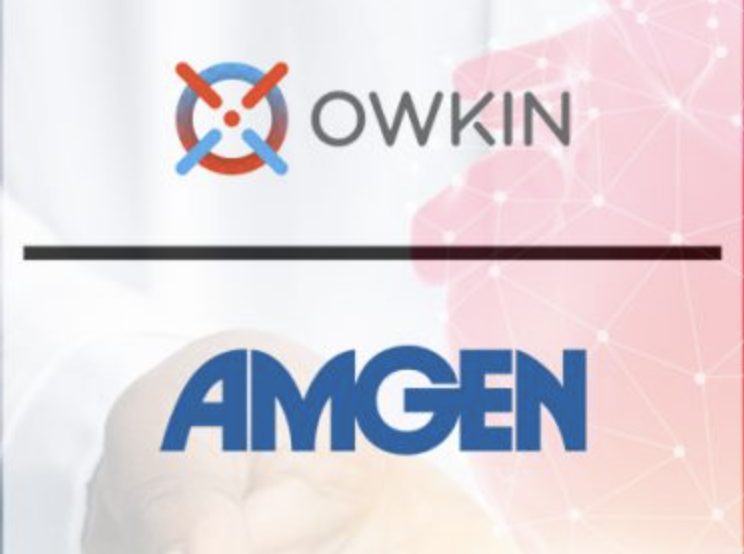
In November, Owkin and Amgen demonstrated that machine learning techniques are more accurate at predicting risk of severe cardiovascular disease than traditional clinical methods. The study included 13,700 participants in the placebo group of an Amgen clinical trial evaluating the cholesterol drug Repatha, Owkin’s AI algorithms accurately identified which patients were at the highest risk for death, heart attacks or stroke over 3+ years. Owkin compared several AI approaches and used hundreds of different clinical variables. The best-performing model used age, medical history, smoking status, cholesterol count, kidney function, diabetes, —but also identified less-common variables that could help doctors predict people at highest risk of cardiac events. The study was published in The European Heart Journal Digital Health on November 15th.
PathAI Forms Partnership with Roche

In October, PathAI and Roche announced a strategic partnership to develop and distribute PathAI’s AI-powered technology through Roche’s uPath enterprise cloud software. The collaboration brings together all of the components required to deliver an AI-based digital pathology medical device including assay, scanner, image management system, and image analysis algorithms. The collaboration will provide a comprehensive menu of AI-powered digital pathology solutions in diagnostics to accelerate biomarker development and enable personalized medicine to people worldwide. The collaboration will initially involve PathAI-developed algorithms focused on immuno-oncology in multiple cancer type and will also support biopharmaceutical partners.
Cyclica and SGC Demo Important Proof Point of AI Design for Intractable Targets
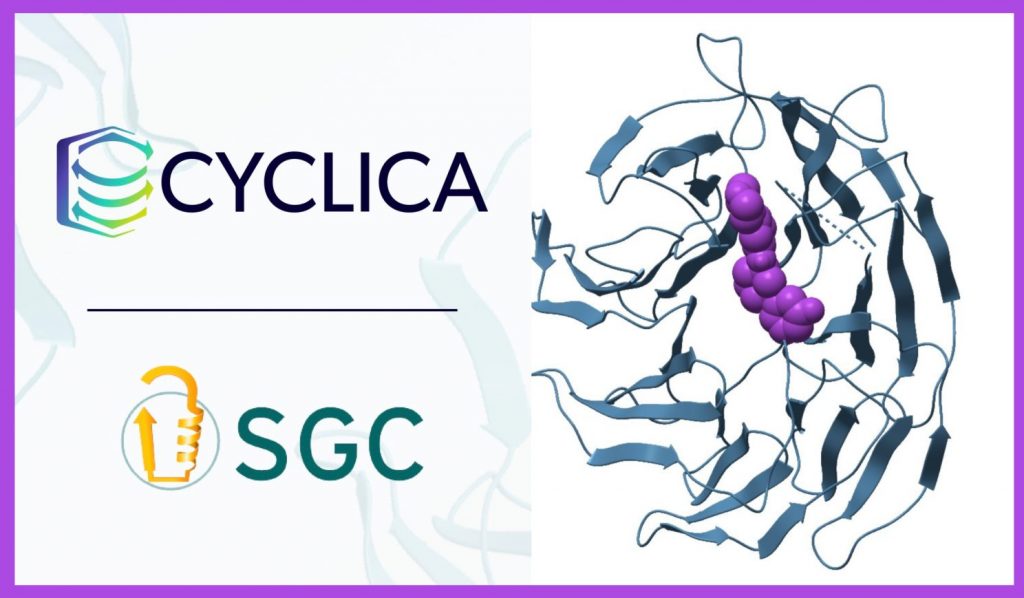
In November, Cyclica and the Structural Genomics Consortium demonstrated application of AI for data less undruggable target DCAF1 and submitted first co-crystal structure to the PDB. This was achieved by testing approximately 100 compounds predicted by Cyclica’s deep learning platform, compared to traditional methods, which would have required testing thousands of molecules experimentally. This is an important proof point of AI design for intractable targets.
Wyss Center Receives CE Mark for NeuroKey Brain-Computer Interface

In May, the Wyss Center for Bio and Neuroengineering was granted the European CE mark Class I for its NeuroKey Brain-Computer Interface device. NeuroKey is an implantable device that can help restore mobility, communication, and independence for people with paralysis or other nervous system disorders. NeuroKey makes it possible for people who are completely paralyzed and unable to speak to communicate using their own brain signals. NeuroKey is optimized for the analysis of large data streams from implantable BCIs but can also be integrated with other acquisition devices to process data such as temperature and blood flow. Scientists at the Wyss Center are developing clinical solutions from neuroscience research and unifying neuroscience at all scales from genes to the whole brain. Their current work addresses indications such as epilepsy, stroke, Parkinson’s disease, amyotrophic lateral sclerosis, and dementia. BCI architectures incorporate AI to analyze large data streams from implantable BCI and support movement trajectories.
Fundraising, Partnerships, Acquisitions
BenevolentAI and Odyssey Announce $1.7 Billion SPAC – Biggest Ever

In December, Odyssey entered into a SPAC agreement with BenevolentAI. The deal which valued BenevolentAI at $1.7 billion is the biggest acquisition ever involving a European SPAC. Olivier Brandicourt, former CEO of Sanofi, joined the BenevolentAI board upon completion of the deal and AstraZeneca announced plans to expand its existing collaboration with BenevolentAI. BenevolentAI’s platform has generated 20+ drug candidates using AI and machine learning including novel targets for treating ulcerative colitis and an atopic dermatitis. BenevolentAI’s collaboration with AstraZeneca delivered the first novel AI-generated target for chronic kidney disease and BenevolentAI also successfully identified Eli Lilly’s baricitinib as a treatment for COVID-19, which is now FDA emergency-use approved.
Recursion Raises $436 Million in IPO

In April, Recursion raised $436 million in an IPO led by Goldman Sachs and JP Morgan Chase. The shares are trading on the Nasdaq Global Select Market under the symbol RXRX. In September the company reached a deal with Bayer to use AI to find new drugs for lung fibrosis and other fibrotic diseases. Bayer’s investment arm led a $239 million funding round for Recursion in September. The company has 4 compounds in Phase I Clinical Trials, 2 compounds in Pre-Clinical Development, and has compounds in Early Discovery through Pre-Clinical Development for 29 diseases where it has identified and is developing targeted compounds. This year Recursion also received FDA fast track approval for REC-2282 for Fragile X.
Exscientia Raises $350 Million in IPO

In September, Exscientia raised $350 million its IPO and completed a $160 million private placement that ran concurrently with the IPO, backed by SoftBank and the Bill and Melinda Gates Foundation. All together, the company raised over $500 million and is now trading on Nasdaq under the stock symbol EXAI. The company has developed over 20 drug candidates using AI algorithms and plans to develop its own drugs as well as licensing drug candidates to other companies. In April the company announced a collaboration with Evotec on a phase 1 clinical trial on a new anticancer molecule. Exscientia is also collaborating with Bristol Myers Squib, Sanofi, Bayer, and Dainippon Sumitomo Pharma. This year Exscientia announced that their first AI-designed (different from AI-discovered as the target is not novel) molecules entered human clinical trials.
Insitro Raises $400 Million in Series C
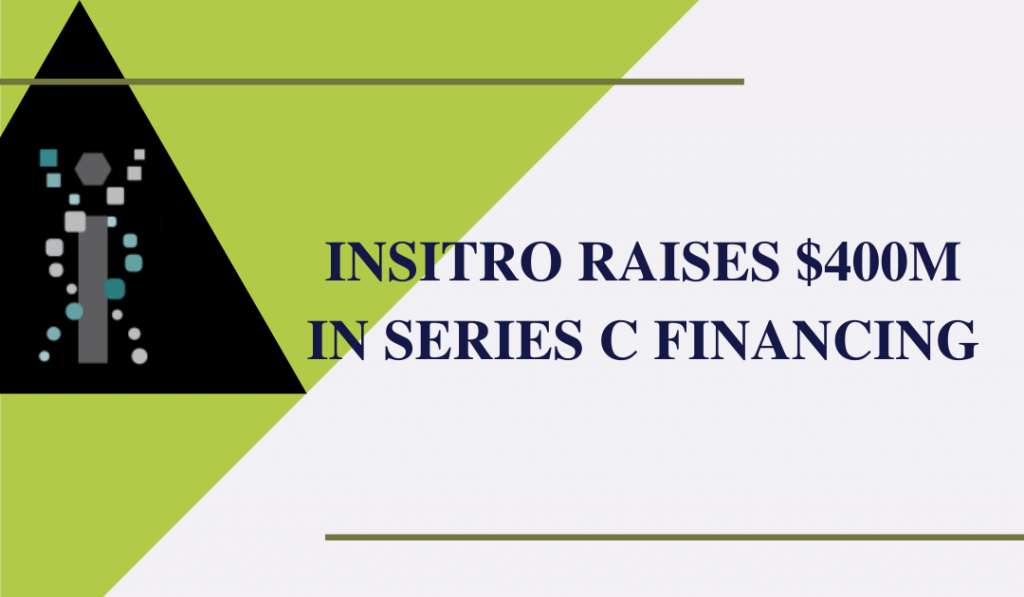
In March, Insitro raised $400 million in Series C. The company uses machine learning to extract valuable insights from phenotypic, genetic, and clinical data. The financing was led by Canada Pension Plan Investment Board (CPP Investments), with significant participation from current investors Andreessen Horowitz. Insitro’s approach to rethinking drug discovery and development is fueled by three strategic pillars 1) machine learning-enabled statistical genetics on deeply phenotyped human cohorts to discover targets and patient segments with potential to inform clinical strategy, 2) predictive cell-based disease models to discover targets, patient segments and drugs 3) and machine learning-enabled therapeutics design.
Insilico Medicine Raises $255 Million in Series C
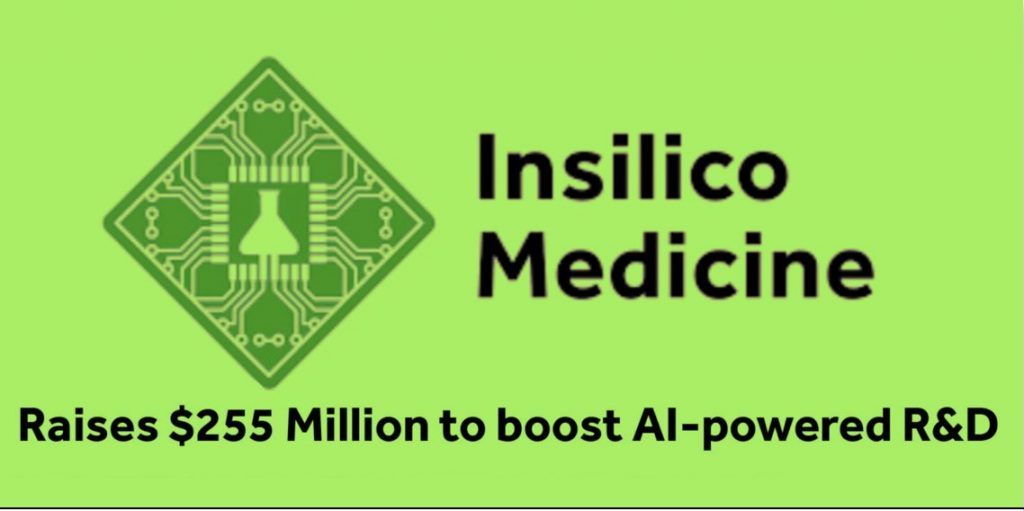
In June, Insilico Medicine closed a $255 million oversubscribed Series C round led by Warburg Pincus. Since its inception in 2014 the company has raised over $310 million and received multiple industry awards. Insilico Medicine has also published over 130 peer-reviewed papers and has applied for over 30 patents. Proceeds from this round will be used to advance the company’s current therapeutic programs into human clinical trials, initiate multiple new programs for novel and difficult targets, and further develop its AI and drug discovery capabilities.
PathAI Raises $165 Million In Series C

In May 2021 PathAI raised $165 million in Series C funding co-led by D1 Capital Partners and Kaiser Permanente. Other investors included General Atlantic, Tiger Global Management, 8VC, Adage, Biospring Partners, General Catalyst, KdT Ventures, Polaris Partners, Refactor Capital and strategic partners Bristol-Myers Squibb Company, Labcorp and Merck Global Health Innovation Fund. PathAI will deploy its new capital to accelerate product development while continuing to prioritize the improvement of patient outcomes with reliable AI-powered technology and meaningful collaboration with pharmaceutical and diagnostic partners.
Cellarity Raises $123 Million in Series B
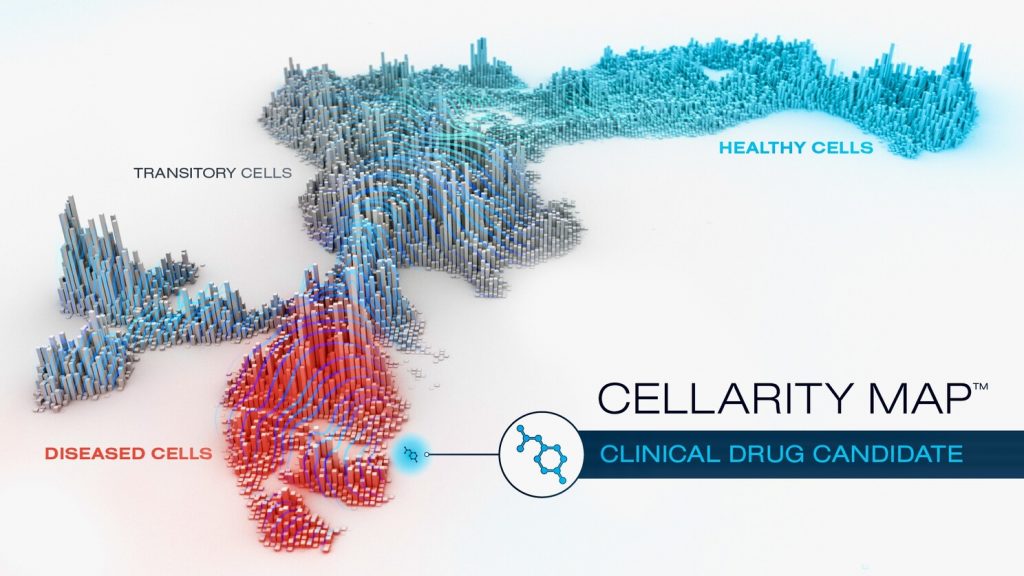
In February, Cellarity raised $123 million in Series B. Cellarity’s approach to drug discovery is based on the computational modeling of cell behavior, leading to a more complete understanding of system and network biology to uncover cell-behavior-targeted medicines for a wide variety of diseases. Cellarity is generating unprecedented biological insights by combining its unique expertise in network biology, high-resolution data, and machine learning. The result is a new understanding of the cell’s trajectory from health to disease.
Arbor Biotechnologies Raises $215 Million in Series B

In November, Arbor Biotechnologies announced the completion of an oversubscribed $215 million Series B. The company has raised over $300 million to date. Arbor is discovering and developing the next generation of genetic medicines based on wholly owned genomic editors discovered from its machine learning/AI driven discovery platform. The company leverages AI, genome sequencing, gene synthesis, and high-throughput screening to accelerate the discovery of proteins to improve human health. The company plans to use the funding to advance their programs in liver and CNS disease into the clinic and continue investing in its novel discovery engine to develop next generation gene editing technology.
Doc.ai Acquired By Sharecare
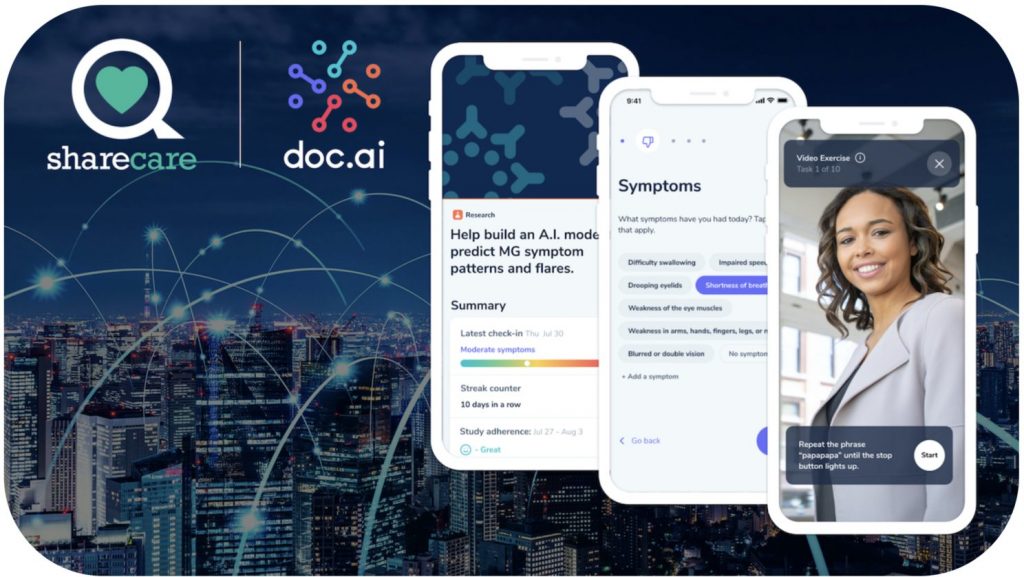
In February, Doc.ai was acquired by Sharecare. Doc.ai co-founders Sam De Brouwer and Walter De Brouwer were named Sharecare’s new chief strategy officer and chief scientific officer. Other members of the doc.ai senior management team also have joined Sharecare’s leadership team, including Nirav Shah as the company’s new chief medical officer and Akshay Sharma, who serves as executive vice president of artificial intelligence. Doc.ai was founded in 2016 in Palo Alto. The company’s digital health platform enables the capture of real-world medical and life data and their poly-omics data pipeline handles all forms of medical data to make it ready for analysis and model building. The company built a series of companion apps in the field of medical research, genetics and mental health transforming engagement into a mobile real-time experience. Financial terms of the acquisition of doc.ai were not disclosed.
AI Hardware and Infrastructure
Broad Institute, Verily, and Microsoft Launch Terra
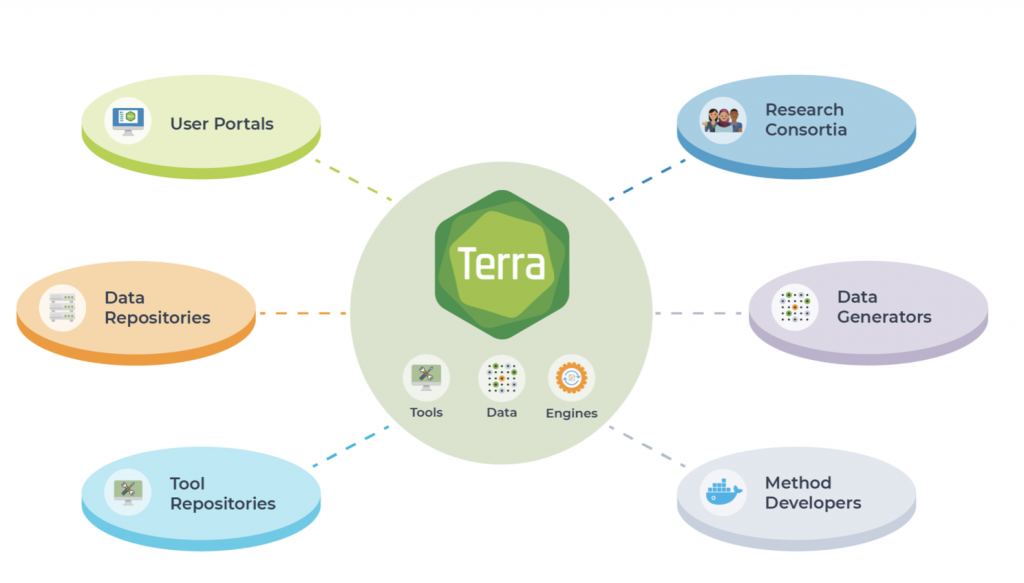
In January, the Broad Institute of MIT and Harvard, Verily, and Microsoft announced a strategic partnership to accelerate new innovations in biomedicine through the Terra platform. Terra (originally developed by Verily and the Broad Institute) is a secure, scalable, open-source platform for biomedical researchers to access data, run analysis tools and collaborate. Terra is actively used by thousands of researchers every month to analyze data from millions of participants in important scientific research projects. The platform provides cloud, data, and AI technology, and access to its global network of more than 168,000 health and life science partners, to help researchers interpret an unprecedented amount of biomedical data. This platform connects data repositories in the cloud and enables researchers to perform integrative analyses reproducibly across datasets at massive scale.
NVIDIA Launches the UK’s Most Powerful Supercomputer
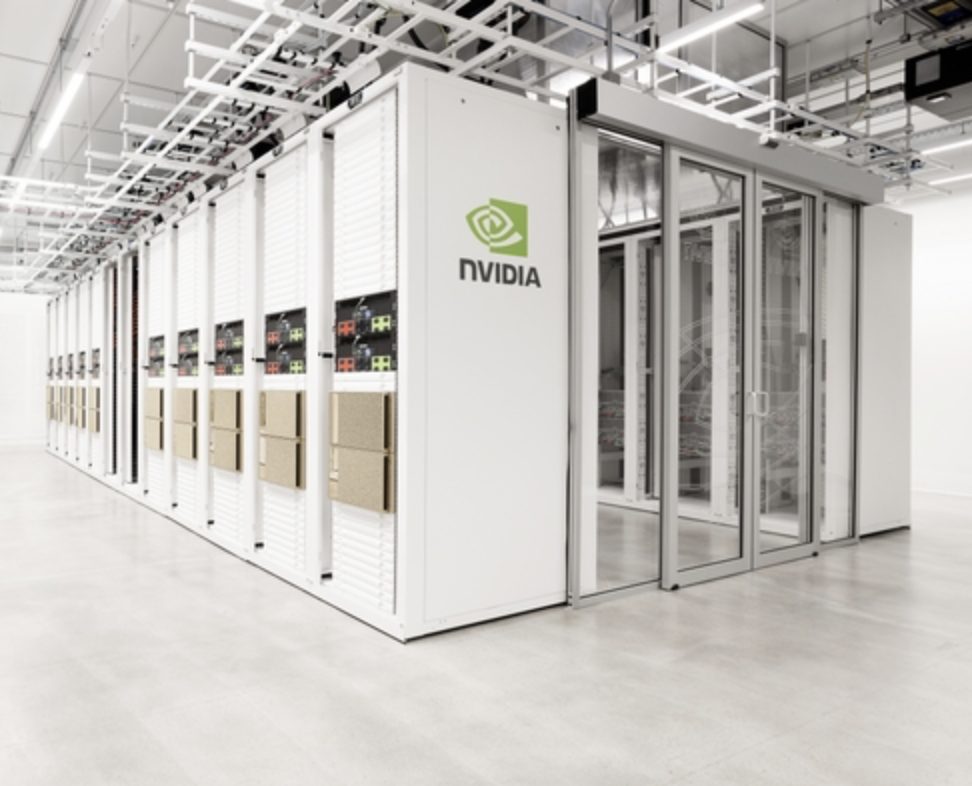
In July, NVIDIA launched Cambridge-1 the UK’s most powerful supercomputer. This supercomputer is dedicated to life sciences research and will be used with AI to design new drugs, and improve the accuracy of finding disease-causing variations in human genomes. Cambridge-1 has the potential to significantly accelerate and optimize every stage of drug research. NVIDIA is collaborating with AstraZeneca to build a transformer-based generative AI model for chemical structures, which will allow researchers to leverage massive datasets using self-supervised training methods and enable faster drug discovery. This year NVIDIA also partnered with Schrödinger. The companies will make Schrödinger’s software compatible with NVIDIA’s supercomputer systems, resulting in even faster and more accurate molecular modeling. Cambridge -1 leverages NVIDIA’s SuperPOD architecture and uses NVIDIA’s BlueField2 datacenter processing unit (DPU). It has 80 DGX A100s, 20 terabytes/sec InfiniBand, 2 petabytes of NVMe memory, 10 petaflops (Rmax), and 400 petaflops AI compute.
Microsoft Launches One of the World’s Most Powerful Supercomputers

In May, Microsoft announced their new supercomputer which ranks in the top five of publicly disclosed supercomputers in the world. This is a milestone in the company’s AI at Scale initiative to create new supercomputing technologies in Azure. Training massive AI models requires advanced supercomputing infrastructure with clusters of state-of-the-art hardware connected by high-bandwidth networks. It also needs tools to train the models across these interconnected computers. The supercomputer was built in collaboration with OpenAI and designed using Azure to train extremely large AI models. The objective is to make its large AI models, training optimization tools, and supercomputing resources available through Azure AI services and GitHub so developers, data scientists and customers can easily leverage the power of AI at Scale. The supercomputer developed for OpenAI is a single system with more than 285,000 CPU cores, 10,000 GPUs and 400 gigabits per second of network connectivity for each GPU server. The supercomputer is hosted in Azure and also benefits from all of the capabilities of a robust modern cloud infrastructure including rapid deployment and access to Azure services.
Novartis and Microsoft Launch AI Innovation Lab
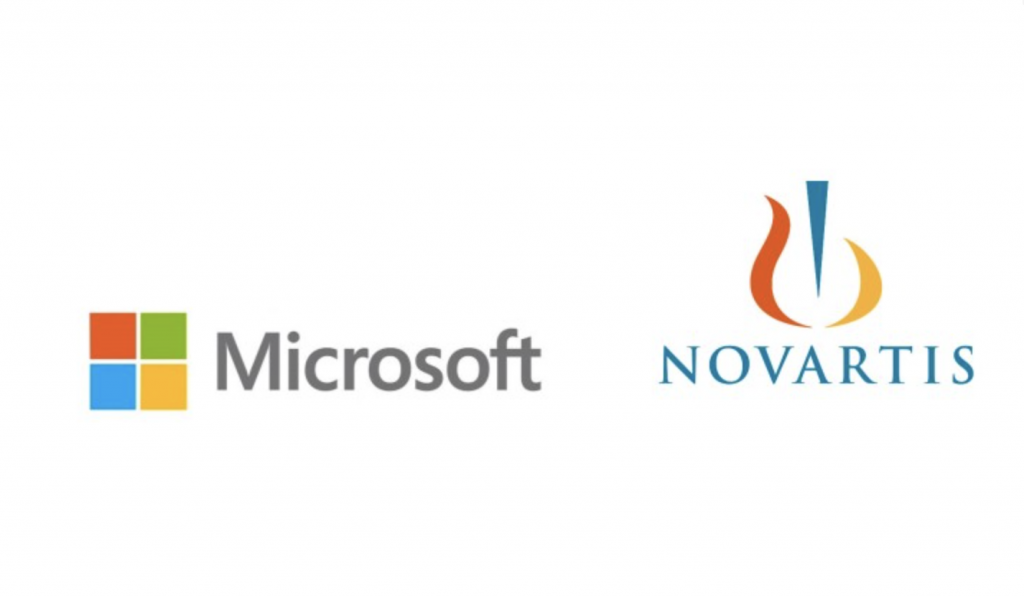
In October, Novartis launched a new AI innovation lab as part of a strategic partnership with Microsoft. The multi-year research and development strategic collaboration will focus on two objectives 1) AI Empowerment: The lab will bring together data from Novartis and Microsoft’s AI solutions to create new models and applications that help associates improve challenges in medicine 2) AI Exploration: The lab will use AI to improve challenges in generative chemistry, image segmentation and analysis for personalized therapy delivery and optimization of cell and gene therapies. The companies will apply next-generation AI platforms and processes that support future programs. The investment includes project funding, subject matter experts, technology, and tools.
Microsoft Announces Azure OpenAI Service
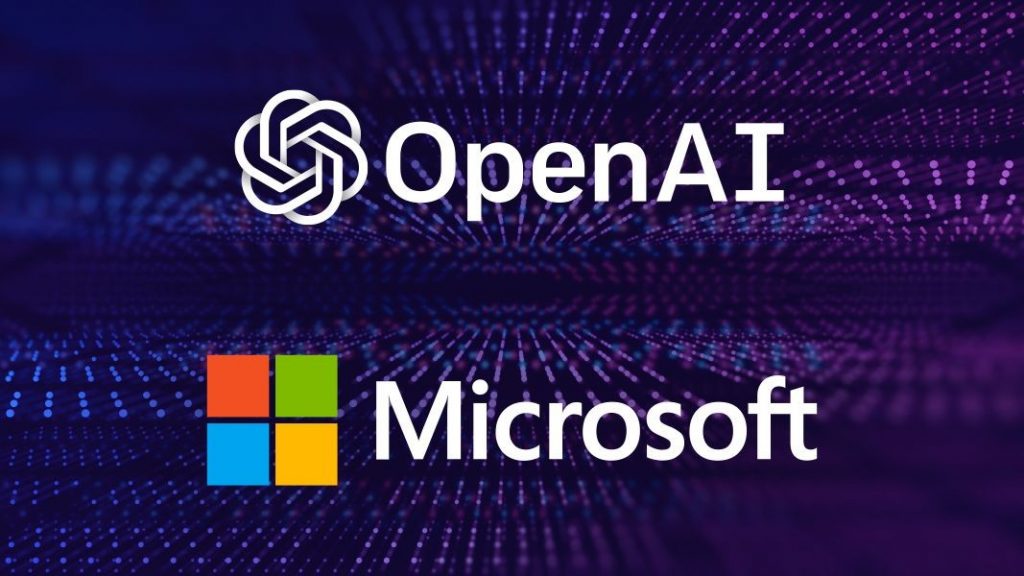
In November, Microsoft announced Azure OpenAI Service. The Service provides OpenAI’s machine learning models and access to GPT-3 – the world’s most advanced AI system capable of human-like dialogue. OpenAI was founded in 2015 by Elon Musk and Sam Altman, and other investors including Reid Hoffman and Peter Thiel who invested $1 billion. In 2019 Microsoft partnered with OpenAI and and invested $1 billion. GPT-3 is the third iteration of OpenAI’s Generative Pre-Trained Transformer model. Current GPT-3 features include powerful search, conversation, idea generation, text completion, and other advanced AI features. Most AI systems are designed for one use-case but GPT-3 provides a general-purpose “text in, text out” interface. Given any text prompt, the API will return a text completion. GPT-3 is extremely good at conversing with humans and it can even converse with itself. The key to success with GPT-3 is figuring out how to prompt the API. When given appropriate prompts, GPT-3 responds to questions with sophisticated and creative answers. Codex is like GPT-3, but instead of being trained on natural languages, it is trained on code, which allows users to generate new code, and even create entire sections. GPT-3 derivative, Codex, helps developers write code more efficiently and avoid repetitive tasks with automatic code completion and suggestions. Azure OpenAI Service will allow people to convert natural language into software code, summarize massive amounts of text, and generate answers to questions.
Nuance Launches the Nuance Precision Imaging Network

In November, at the RSNA annual meeting, Nuance Communications launched the Nuance Precision Imaging Network. This AI-powered cloud platform leverages best-in class AI models from Nuance partners to deliver data and insights from diagnostic imaging into existing clinical and administrative workflows. Nuance’s technology is used by 80% of radiologists and 10,000 healthcare facilities in the US.
EC Approves Microsoft’s $19.7 billion Acquisition of Nuance
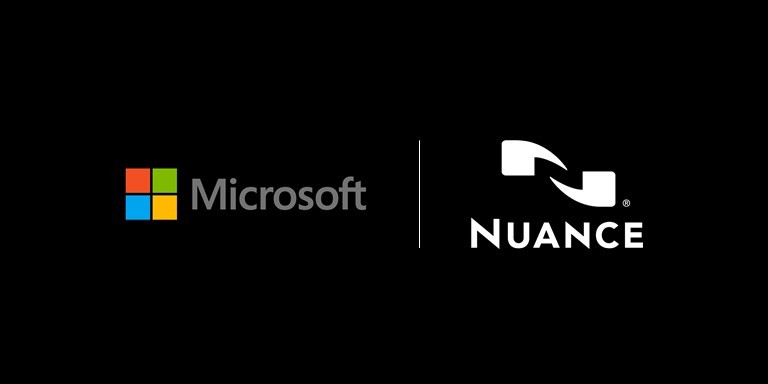
In December, the European Commission approved Microsoft’s $19.7 billion acquisition of Nuance. This was the last step in completing the 2nd largest acquisition in Microsoft’s history after the LinkedIn purchase in 2016 for $26.2 billion. In April Microsoft announced the acquisition of Nuance to enhance its cloud and AI offerings for healthcare customers. Nuance created the voice recognition space and has been building deep domain expertise across AI and healthcare ever since. Note: I started working at Nuance in 2002 in Menlo Park and was one of just four people in Nuance’s original technical support division formed in 2002.
What To Expect in 2022
In 2022 watch for the convergence of advanced technologies in healthcare. In 2021 Boehringer Ingelheim partnered with Google to use quantum computing in pharmaceutical R&D and Roche partnered with Cambridge Quantum Computing to design quantum algorithms for early-stage drug discovery and development. Cambridge Quantum Computing has already engaged with 5 of the top 10 pharma companies and major pharma companies have formed a consortium called QuPharm to work together to advance quantum computing for drug production. AI in Healthcare companies that collaborate with big pharma and major tech companies will have the opportunity to leverage their powerful resources and gain a huge advantage over companies that don’t.
